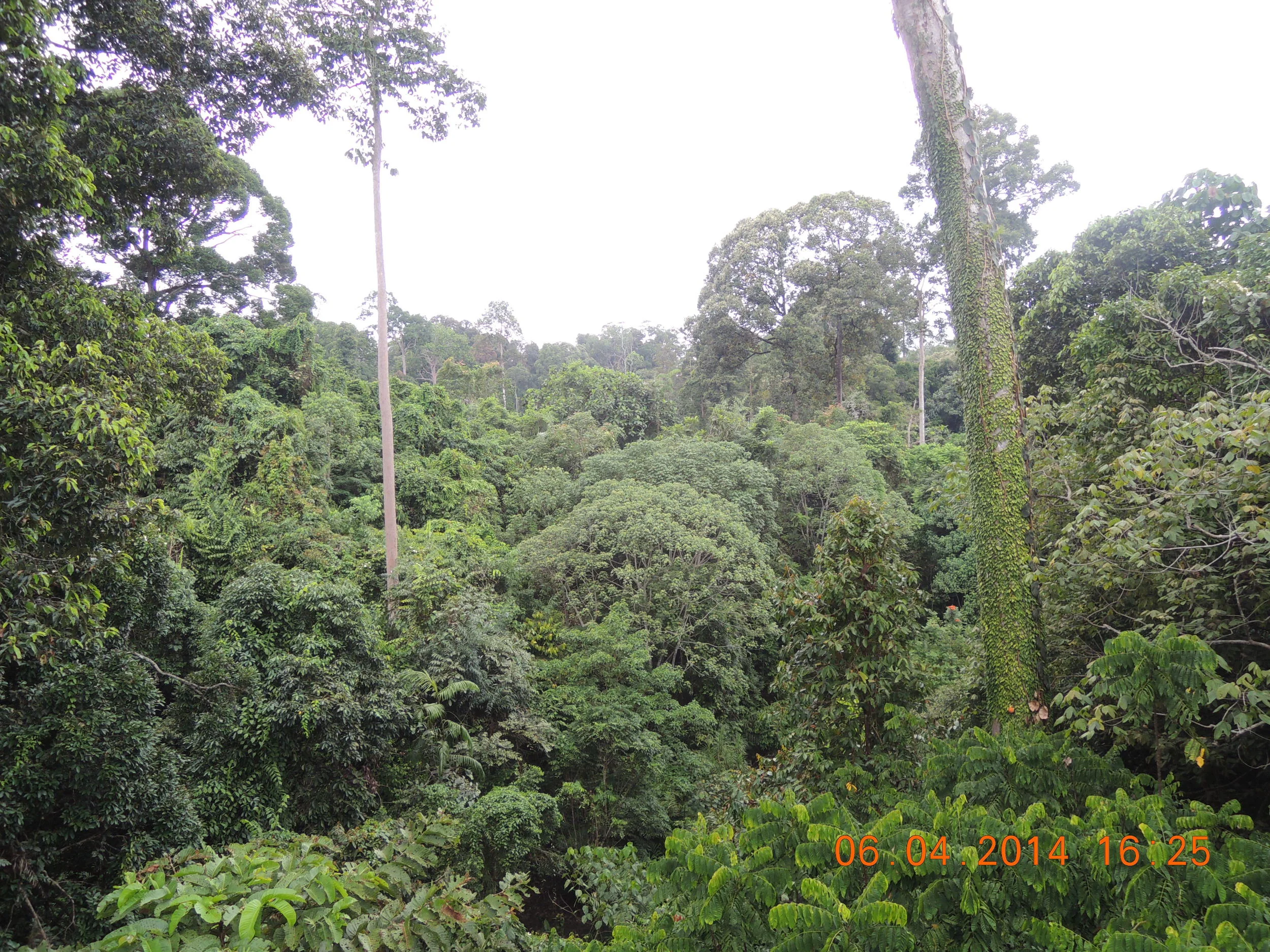David, Leanne, and I fly from KL to the Malaysian state of Sabah, on the island of Borneo. We’re met at the airport by Michael, our guide, who loads us into a van and delivers us to a resort in the Sepilok Rain Forest. We were told to expect the most basic accommodation, and that’s what we get—water pressure so low it’s barely a trickle, dust on every surface, spider webs in the corners. There’s a drop of dried blood on the pillow. I turn the pillow over. My rough sheets are sprinkled with dead ants. I brush them off and shut up about it. Oh, and also, no wine.
Our first excursion is to the nearby Orangutan Protection Center, a campus dedicated to teaching orphaned orangutans how to fend for themselves in the wild. The rangers who work there are passionate about baby orangutans, who have sweet faces and are droopy with need. The heartrending story we get from Michael is that the mother orangutans are killed because hunters want the babies to keep or sell as pets. But babies that were once cute soon become destructive, and the owners turn them loose. These little ones have no idea how to get on in the wild, so when some caring sensible rural person finds a young helpless orangutan, he or she notifies the center. The orphans are brought in, nurtured, and taught how to take care of themselves in their natural habitat. A success is when a young orangutan grows into a well-adjusted and independent animal. Eventually the orangutans reach a point where they’re ready to be released into the forest. When this happens, some stay in the area for a week, or even a month. Food’s put out for them, but they all eventually fade into the trees. They’re solitary animals and fruit’s all over the place, so why hang around just to be fed? The orangutans in this state of almost-wild are the ones the tourists are allowed to observe. Leanne, David and I, plus a hundred-fifty other tourists, are led to a walkway that overlooks the platform where, twice a day, a ranger puts out food. When the food appears a few primates clamber languidly down the ropes, eat a few papayas, and aimlessly climb back into the trees. Then the whole crowd shuffles next door to the newly constructed Sun Bear Protection Center. These bears are endangered because their livers are thought to stop internal hemorrhaging. Who comes up with these things? Some peculiar person, at some point in time, cut open one of these darling little bears, removed its liver, offered it to an ailing friend, and said, “This’ll make you feel better.” Here, too, we pack ourselves on to a platform where we stare outward for forty minutes at two small brown bears as they snooze in the trees.
Dusk finds us walking the same path we traveled when we saw the orangutans—only this time without the crowd that slumped through the heat earlier in the day. The three of us are on a private nighttime tour of the rain forest. We come to a stop on the same platform, but this time instead of turning toward the orangutan feeding platform, the ranger points to the top of a tree behind us. Dutifully, we turn and gaze upward. Outlined, on the highest bare branch of a towering tree, is a giant flying squirrel. Dark gray against the pale gray sky, he’s bigger than any squirrel I’ve ever seen—the size of a full-grown macaque. Suddenly he spreads his arms and sails from that tall, tall tree to a slightly lower bough on the neighboring tree. The sight is breathtaking. We sigh in amazement. In the surrounding area there are approximately six flying squirrels. We crane our necks until they ache, watching as they fling themselves through the sky until it’s too dark to see them anymore. Then we move further into the rain forest. Trunks, ferns, clinging ivy, and brush surround us. Geckos bark, frogs chirp, and birds screech. It’s a surreal environment, black-dark. If we step off the path the leeches will get us!
A view from an observation tower in the Sepilok Rain Forest
Orangutans are cute.
A night time creature, a caterpillar. Don't touch it! It'll give you a burning rash.




